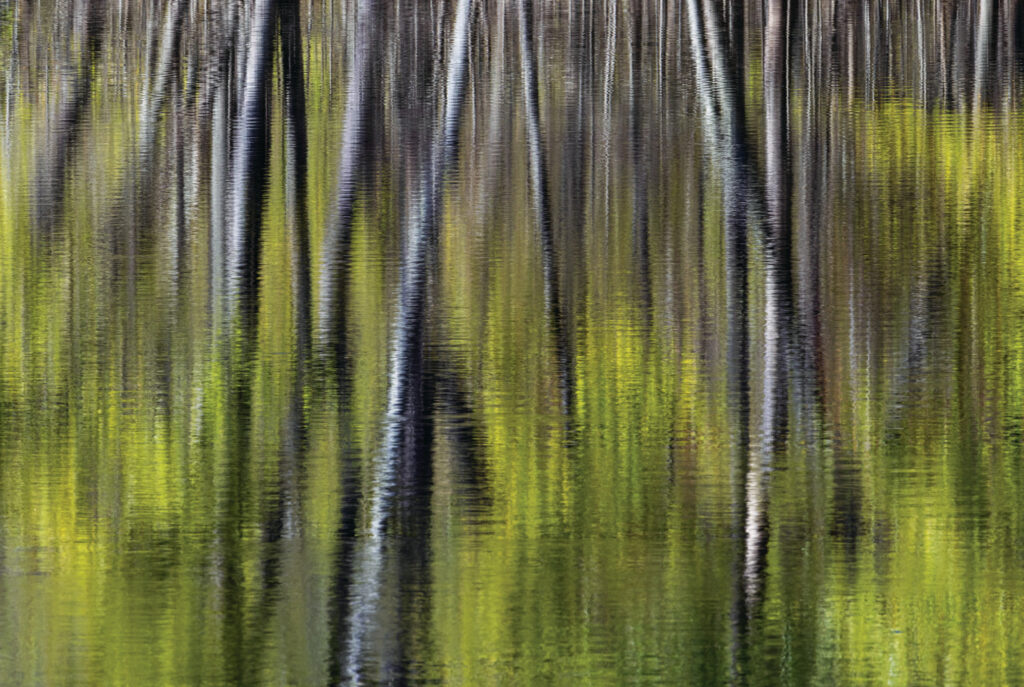Vibrant reflections always catch my eye. The interaction of bright sunlight on the surface of water and the resulting reflections cast upon it usually stop me in my tracks. When these elements come together as they did on the afternoon I shot this image at Radnor Lake State Park, they can result in stunning images.
As a photographer, I tend to stay away from shooting in the middle of the day, especially on bright, sunny days. It’s a general rule of thumb that shooting during this time of day will not result in great photographs. The quality of light will be harsh, creating too much contrast for a successful image.
That being said, we all know that rules are meant to be broken, and photographers prove this paradigm all the time. The French Impressionist painter Claude Monet also broke the rules of his era with his painting style and use of color. His famous works such as “The Water Lilies” and “Water Lily Pond” were often strongly rebuked by the critics of the time.
Monet’s quote, “These landscapes of water and reflection have become an obsession,” has always spoken to me. When I view reflections, I simultaneously feel a calmness and an excitement as I focus on the water’s surface. It seems as if nature is painting a watercolor for me to see in real time.
In my mind’s eye, nature’s paintings are unique and fleeting, captured only as one moment in time in each of the still photographs I take.
At first, the lake was still and almost mirroring a perfect reflection of the trees on the distant shore. Not long after I set up my tripod and chose an exposure, a gentle breeze began to ruffle the surface, adding some interesting patterns.
I set the exposure for the greatest depth of field and to allow for some of the movement to blur the surface ever so slightly. The resulting texture brings the scene to life and reminds me of the brush strokes of the Impressionists, emphasizing the black and white tree trunks at the lake’s edge with rich yellow and green splashes of leaves.
Pro tip — adding a circular polarizer to your lens can cut out glare from the water’s surface and deepen the intensity of the reflection.



